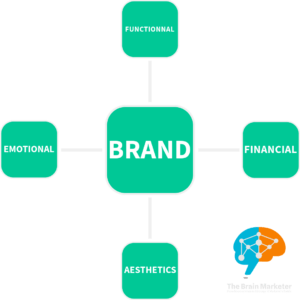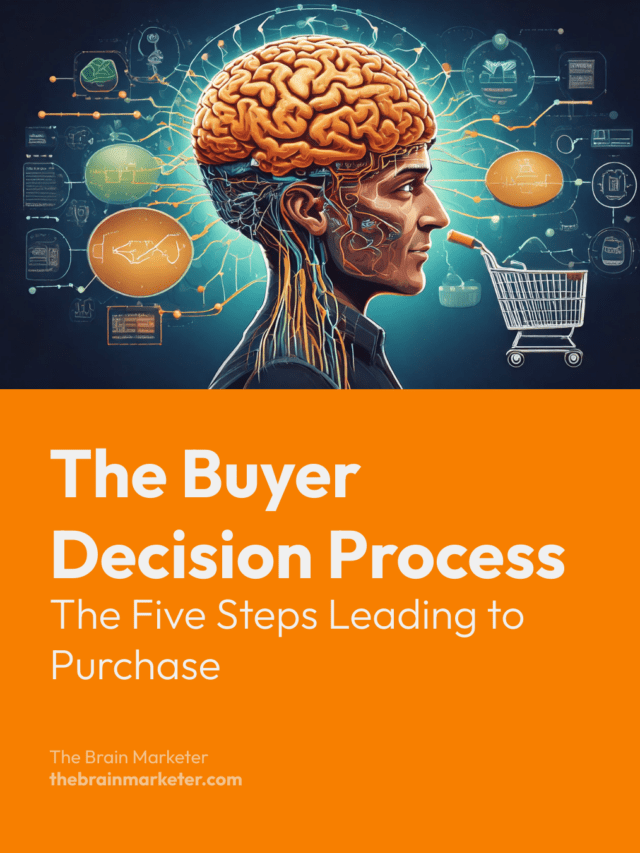Introduction
To sell effectively, it is essential to understand the buyer’s decision process. Every purchase decision is influenced by a series of steps that the consumer goes through, either consciously or unconsciously. As a marketer, identifying these steps allows you to adjust your strategy to meet the consumer’s needs at each stage of their journey. This article explores the five main steps of the buyer decision process, from problem recognition to post-purchase behavior, and shows how brands can influence each stage.
🎙️ Unpack the Topic with this Podcast
The 5 Steps of the Buyer Decision Process
1. Problem Recognition
The first step in the decision process is problem recognition. This occurs when the consumer identifies an unmet need or a problem that requires a solution.
Example: The consumer might think, “Chocolate makes me gain weight,” which creates an internal conflict between the desire for pleasure and the goal of staying fit. The role of marketing here is to offer a solution that meets this need without guilt, such as low-sugar chocolate bars or positive messages about balanced indulgence.
Questions to Ask:
- What problem does your product solve?
- What is the source of the problem (internal or external)?
- Why does the consumer choose this product to solve the problem?
Marketing Strategy: To stimulate problem recognition, brands can use external stimuli such as ads that highlight a latent need or user testimonials. This helps make the consumer aware of a problem they may not have identified before.
2. Information Search
Once the problem is recognized, the next step is the information search. The consumer looks for potential solutions using different sources of information, such as:
- Personal sources: Recommendations from family and friends.
- Public sources: Blogs, online forums, user reports.
- Commercial sources: Advertisements, brochures, brand websites.
- Experiential sources: Their own past experiences.
The search depends on several factors:
- The severity of the problem (importance of the need).
- The amount of information already available.
- The ease of obtaining information.
Example: For someone looking to buy a car, the search might include online reviews, recommendations from friends, and visits to dealerships.
Marketing Strategy: Brands can increase their visibility during this phase by optimizing their search engine presence, offering customer reviews and comparisons, and using influencers to guide consumers toward their product.
3. Evaluation of Alternatives
After gathering enough information, the consumer evaluates the alternatives available. They compare different options to determine which one best meets their needs. This can include criteria such as product features, price, promotions, and customer reviews.
Example: Flash sales, like those offered by platforms such as Qoqa, are an effective way to accelerate this step. By creating a limited offer in terms of stock and time, the brand reduces consumer uncertainty and stimulates a faster purchase decision.
Marketing Strategy: To stand out, marketers should highlight the distinctive attributes of their product, such as unique benefits or added value. Limited-time offers and emotional triggers, such as urgency or scarcity, can also influence the perception of alternatives and speed up the decision-making process.

4. Purchase Decision
After evaluating the alternatives, the consumer is ready to make a purchase decision. However, two variables may intervene between the purchase intention and the final decision:
- The attitude of others: Recommendations or opinions from friends and family can reinforce or discourage the purchase.
- Unexpected situational factors: Events such as financial difficulty or changing circumstances can affect the decision.
Example: A consumer may intend to buy a high-end smartphone but be influenced by negative feedback from their circle or by an unexpected promotion on a competing model.
Marketing Strategy: To minimize purchase abandonment, brands can offer incentives such as time-limited discounts, flexible payment options, or a satisfaction guarantee to reassure the consumer.
5. Post-Purchase Behavior
The final step is post-purchase behavior, where the consumer evaluates whether they are satisfied or dissatisfied with their purchase. Satisfaction depends on the difference between the consumer’s expectations and the actual performance of the product.
Example: If a consumer buys a product expecting it to improve their quality of life, they will be satisfied if the product meets or exceeds those expectations. Conversely, disappointment may lead to negative reviews, cognitive dissonance, or even product returns.
Marketing Strategy: Post-purchase follow-up is crucial to ensure customer loyalty and avoid dissatisfaction. Brands can offer loyalty programs, satisfaction surveys, or effective after-sales services to ensure the consumer remains happy and becomes a brand advocate.
Conclusion
Understanding the buyer decision process is essential for developing a marketing strategy that meets the consumer’s needs at every step. From problem recognition to post-purchase behavior, each step offers opportunities for brands to influence and guide the consumer’s decision. By considering the factors that influence each phase, marketers can design more impactful campaigns and create positive buying experiences that enhance satisfaction and loyalty.

Vincent Heimann is a marketing project manager and neuromarketing enthusiast. He founded The Brain Marketer to bridge neuroscience and marketing through accessible, science-based content. With over 10 years of experience in digital strategy, UX/UI and communication, he shares practical insights to help brands connect with the human brain — ethically and effectively

